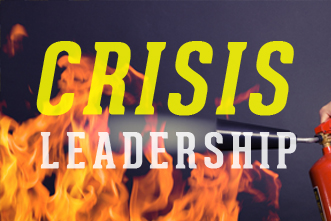I love the leadership displayed during a scene in It’s a Wonderful Life where George Bailey is about to leave for his honeymoon and panic struck the Building and Loan. As the president, he was forced to avert his plan, go back and save the company. He kept the Building and Loan open with a couple of dollars to spare. It was a tense moment. Everything they had worked for was at risk, but the crisis was solved—at least until the next crisis came.
That’s the kind of time I’m referring to as a leader.
How do you respond?
There have been several times where it appeared everything was a loss on the team I was leading. I’ve experienced it in planning a single project, as well as with the entire company felt in jeopardy when I was a small business owner.
Crisis.
At the outset of a crisis, how should the leader respond?
I must admit, I haven’t always handled these times as well as George Bailey, but experience has taught me a few things.
Here are five ways to respond at the outset of a crisis:
Slow down – The general tendency is to speed up, but “haste makes waste”. You need to move quickly, and sometimes you have to put out some initial flames, but as much as you can, slow down long enough to think before you react.
Don’t panic – You may indeed be in a panic on the inside, but your outer composure as a leader will set the thermostat of your team. The team’s emotions will almost always be an exaggerated version of the leader’s emotions. If you appear hopeless, the teams emotions will appear even more hopeless.
Get a plan – After you’ve addressed the most pressing needs — brought more of a sense of calm to the team — back away long enough to create a plan of recovery. It could be the best exit plan you can develop, but either way you need a plan. In crisis mode, this sometimes seems like a waste of time. The thought is that if the ship is sinking, you just need to bail water. In my experience, however, getting a plan in place makes the difference in the quality of your leadership through the crisis.
Navigate carefully – Once a plan is in place, you need to become an implementer of the plan. You’re the coach, cheerleader, captain of the ship at this point. You keep the team on task towards the end goal.
Help the team recover – After the dust settles from the crisis, the leader’s job isn’t complete until you help the team recover. That involves learning from what happened, making readjustments as needed, and helping the team begin again. In the best scenarios, this thought process begins to happen even during the crisis mode, giving the team some hope of better days to come.
We all hope to avoid those days of crisis on the team, but it helps to have a paradigm of how we should respond if or when they ever come.
Any thoughts you would add from your experience?












